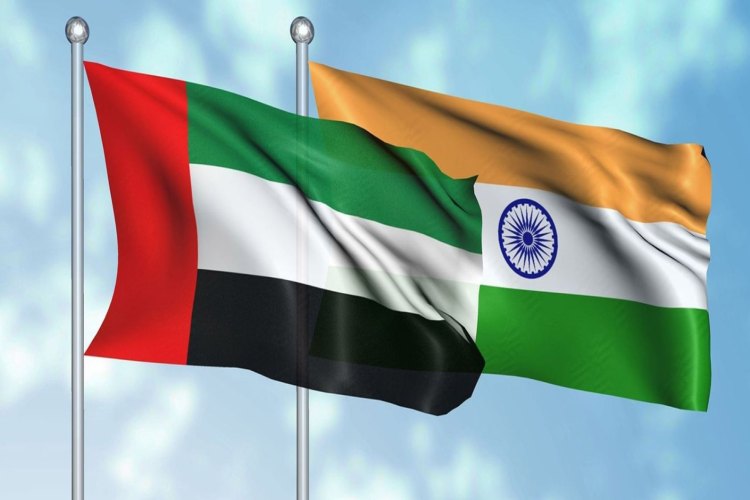
India-UAE CEPA sets $100 billion target: With global trade facing turbulence from tariff wars and fractured supply chains, countries are forging new alliances or strengthening old ones. India and the United Arab Emirates — bound by history and economic interdependence — are stepping up their partnership to cushion these shocks.
At the high-level joint task force on investments in Abu Dhabi last week, commerce minister Piyush Goyal and Sheikh Hamed bin Zayed Al Nahyan reviewed the progress of the Comprehensive Economic Partnership Agreement (CEPA). They emphasised expanding cooperation in areas as diverse as maritime logistics and outer space, underscoring the ambition to double bilateral trade.
READ | Immigration myths keep populism alive in democracies
India-UAE CEPA and rising trade flows
The India-UAE CEPA, which came into force in May 2022, has delivered tangible gains. Bilateral merchandise trade rose from $43.3 billion in FY 2020-21 to $83.7 billion in FY 2023-24, nearly doubling in three years. The UAE is now India’s third-largest trading partner and its second-largest export destination. Gems and jewellery, machinery, petroleum products, and food dominate the export basket.
The ambition now is to lift non-oil and non-precious metals trade to $100 billion within four years. This will centre on sectors such as textiles, home décor, and processed foods. At the same time, the UAE is a critical source of investment flows into India’s infrastructure, energy, and technology sectors.
New platforms and diaspora links
The partnership is not confined to trade flows. The upcoming Bharat Mart—a 2.7 million square foot complex in Dubai’s Jebel Ali Free Zone—will showcase Indian products to global buyers, enhancing market visibility for small and medium enterprises.
The Indian diaspora of 3.5 million in the UAE adds another dimension. Payment integration via the Unified Payments Interface (UPI), now in advanced stages, will allow Indian travellers and expatriates to pay in rupees directly from their bank accounts through QR codes. This will ease remittances, aid the UAE’s shift to a cashless economy, and deepen financial linkages.
The Reserve Bank of India and the UAE Central Bank are also working to enable trade settlements in local currencies and to collaborate on Central Bank Digital Currencies. These moves could reduce dependence on the dollar and provide a buffer against currency volatility.
Complementary strengths
The two economies are increasingly complementary. India seeks investment in infrastructure and secure access to Gulf energy, while the UAE wants to diversify away from oil and position itself as a logistics and innovation hub. India’s manufacturing strengths, technology base, and skilled workforce make for a natural fit with the UAE’s capital surplus and geographic advantage.
Beyond bilateral trade, both sides are exploring joint investments in infrastructure, mining, and housing projects in third countries—leveraging India’s execution capacity and the UAE’s financial clout.
Green energy and digital trade
The untapped potential lies in emerging sectors. Renewable energy and green hydrogen collaboration can anchor ties in a low-carbon future. In digital trade and fintech, the UAE can serve as a gateway for Indian start-ups to West Asian, African, and European markets.
Other promising areas include food processing, healthcare, and higher education. Institutional cooperation in financial regulation, faster adoption of rupee–dirham settlements, and stronger digital payment frameworks could further shield bilateral trade from global disruptions.
Strategic hedge in a fragmented world
The geopolitical context lends urgency to this partnership. With energy markets volatile and the US-China rivalry redrawing supply chains, the UAE offers India a trusted hub for trade and investment, while India provides the UAE with a stable, demographically large market. The relationship is no longer confined to economics—it is a strategic hedge against global uncertainty.
As Gulf economies race to reinvent themselves, India’s role as both market and partner assumes greater significance. For India, the UAE is not only a trade partner and energy supplier but also a bridge to Africa and the wider Middle East.
While India-UAE CEPA has opened doors, unlocking the full potential requires institutionalised dialogue between businesses, sovereign wealth funds, and innovation ecosystems. Success will depend on aligning strategic visions—India’s push for Atmanirbhar Bharat and manufacturing self-reliance, and the UAE’s goal of becoming a logistics and innovation powerhouse.
If these ambitions converge, the India-UAE economic relationship can move beyond bilateral gains to become a model for South-West Asia’s integration into a volatile global order.
